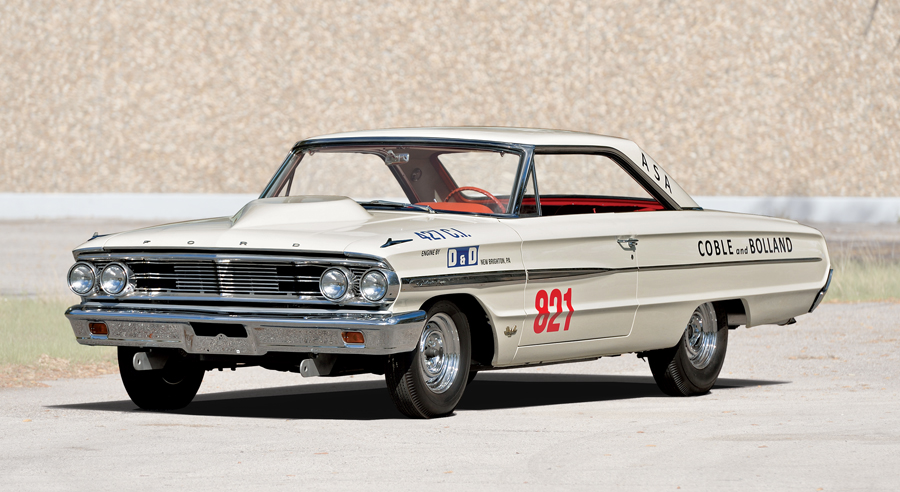- One of 50 Galaxie Lightweights built in 1964; one of the first built
- One of 25 built with an automatic transmission (from the factory with an HX tranny used in Thunderbolts)
- Class winner at the 1966 NASCAR Winternationals at Daytona
- Concours restoration completed in November 2017
- Correct 427/425-hp V8 engine and carburetors
- Correct dual-range HX automatic transmission and RCI bellhousing
- Formerly part of the Rick Kirk Ford Lightweight Collection
- Raced by Cobble and Bolland out of Pennsylvania, later raced by “Crazy Nate” Cohen
Chassis Number: 4A66R133125

